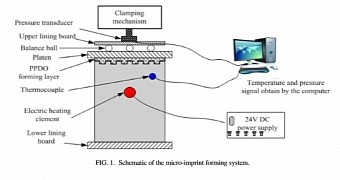Back in June 2014, I was quit pleasantly surprised to learn that there was already a method to 3D print blood vessels. However, though I did not emphasize it overmuch, I was aware that there were few practical uses for such a thing.
Replacing a vein is not exactly the same thing as replacing a whole organ. It would be too complicated and risky to bother, not to mention that we would be hard-pressed to make replacements that are equal to the originals.
So what does that leave? Repairing the ones already there. Currently, electrospinning is the technique most likely to enable vascular grafts that would fully heal damaged blood vessels (cardiac arrest ruptures, for example).
The results aren't too great, though, as the grafts are not rigid enough for use in the human body.
A new solution is now being developed by researchers at Shanghai University’s Rapid Manufacturing Engineering Center, led by Yuanyuan Liu.
A 3D bioprinting technique at microscopic scale, called micro-imprinting, can be combined with electrospinning to develop vascular grafts that may just be robust enough for practical use.
The grafts have three layers: two outer ones made through electrospinning (chitosan and polyvinyl alcohol) and an inner one (3D printed with poly-p-dioxanone, PPDO for short).
We still have some years before even the first human trials are likely to start, but at least the solution is within sight now.

 14 DAY TRIAL //
14 DAY TRIAL //